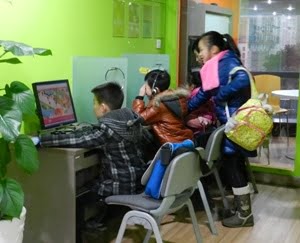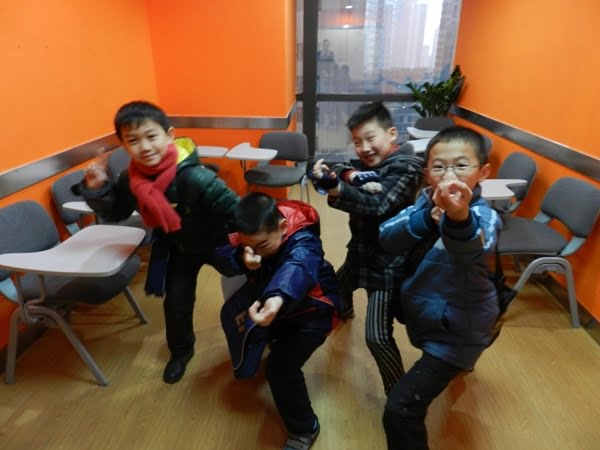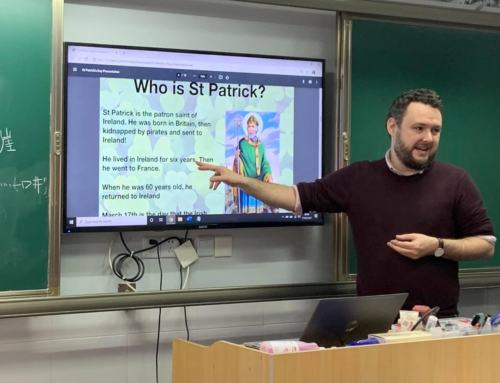Imagine you have just given instructions to your learners, and instead of sticking around to monitor behavior and conduct, you decide to simply leave them to it. What would you imagine to happen?
 Perhaps a ‘Lord of the Flies-esque’ scenario of anarchy and pandemonium whereby only the strongest 8 year old survives? At the very least you would expect rules to be broken, the target language to be thrown out of the window (along with perhaps a pencil or chair); you certainly wouldn’t expect them to do as they were told, right? Let’s first reduce the role of teacher as active in the ‘instruction giving’ and ‘error correction’ stages; therefore removing the teacher from the ‘activity’ or ‘doing’ stage that occurs between them. What actually happens to a class when the teacher leaves the room? In actual fact, experience suggests that in many cases, students not only follow the rules but also produce more of the intended target language. How and why?
Perhaps a ‘Lord of the Flies-esque’ scenario of anarchy and pandemonium whereby only the strongest 8 year old survives? At the very least you would expect rules to be broken, the target language to be thrown out of the window (along with perhaps a pencil or chair); you certainly wouldn’t expect them to do as they were told, right? Let’s first reduce the role of teacher as active in the ‘instruction giving’ and ‘error correction’ stages; therefore removing the teacher from the ‘activity’ or ‘doing’ stage that occurs between them. What actually happens to a class when the teacher leaves the room? In actual fact, experience suggests that in many cases, students not only follow the rules but also produce more of the intended target language. How and why?
 Central to understanding this behavior is the belief that kids want to learn; they want to achieve and to get something right. Kids as they get older also enjoy demonstrating independence from adults and autonomy. Consider for a moment the young boy that wants to visit the shops on his own for the first time, or the young girl that asks the stabilizers be removed from her bike; or the teenager that doesn’t wish his parents to speak to him in front of his friends. This need for autonomy and independence in life can be so easily manipulated into a tool to improve motivation for kids to learn and achieve in class.Yet too many teachers are told and believe that a good teacher is one who is always present; guiding, watching and regulating; as if our learners cease to become social actors while in the classroom and require some enhanced level of pastoral care.
Central to understanding this behavior is the belief that kids want to learn; they want to achieve and to get something right. Kids as they get older also enjoy demonstrating independence from adults and autonomy. Consider for a moment the young boy that wants to visit the shops on his own for the first time, or the young girl that asks the stabilizers be removed from her bike; or the teenager that doesn’t wish his parents to speak to him in front of his friends. This need for autonomy and independence in life can be so easily manipulated into a tool to improve motivation for kids to learn and achieve in class.Yet too many teachers are told and believe that a good teacher is one who is always present; guiding, watching and regulating; as if our learners cease to become social actors while in the classroom and require some enhanced level of pastoral care.
Procedures at EF Chongqing
At EF Chongqing, teachers are encouraged to view learners as social actors who shouldn’t be expected to behave differently inside the classroom as to how they behave outside. It is a key factor of motivation that learners are given the opportunities to achieve something without the arm bands, safety wheels or leash that a teacher would attach to them in a conventional learning environment. However, before we blindly walk out of the classroom, we must consider the conditions the teacher must create for autonomous learning to happen.  The learners must understand completely the ‘rules of the game’. Acceptable classroom conduct must be drilled and comprehended by everyone, as well as the requirements for the successful completion of the activities. The teacher must allow a reasonable level of ‘radical’ approaches to completing the activities while reducing the possibility of out-right cheating. Finally, the teacher must set the social conditions for the proper conduct of individual actors; bullying, intimidation or marginalization must be avoided.
The learners must understand completely the ‘rules of the game’. Acceptable classroom conduct must be drilled and comprehended by everyone, as well as the requirements for the successful completion of the activities. The teacher must allow a reasonable level of ‘radical’ approaches to completing the activities while reducing the possibility of out-right cheating. Finally, the teacher must set the social conditions for the proper conduct of individual actors; bullying, intimidation or marginalization must be avoided.
All our experiences suggest that when learners understand the rules of the game, when left alone, the results are surprising and empowering. In most cases the learning outcomes were met and in some cases students used more target language when compared to what they produced in the presence of the teacher. The ‘Invisible Teacher’ is often one who has a special relationship with his or her students. It all comes down to trust; if you give a little, you’d be surprised what your students do with it!

















Leave A Comment